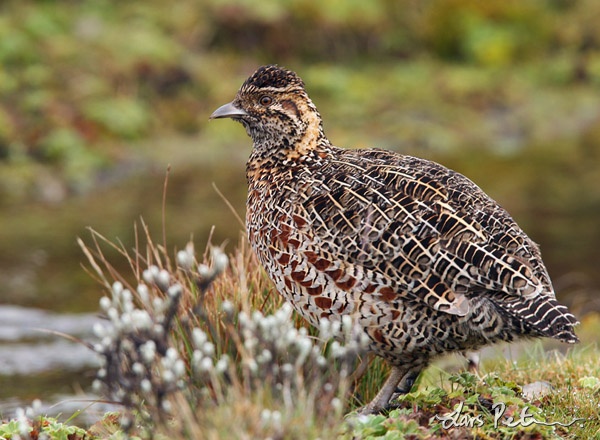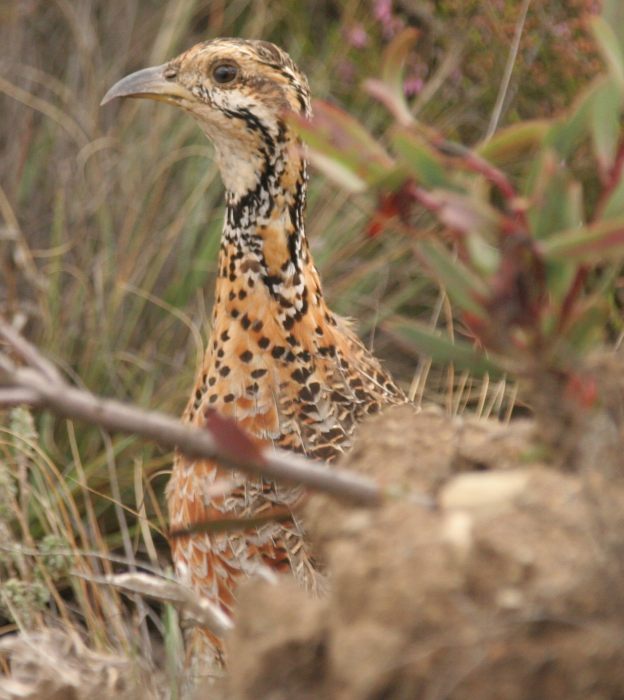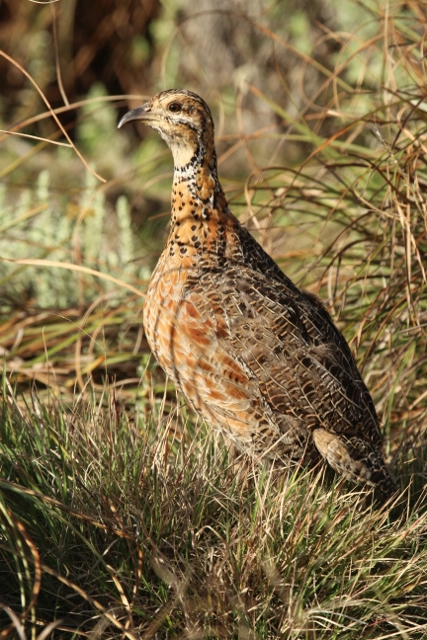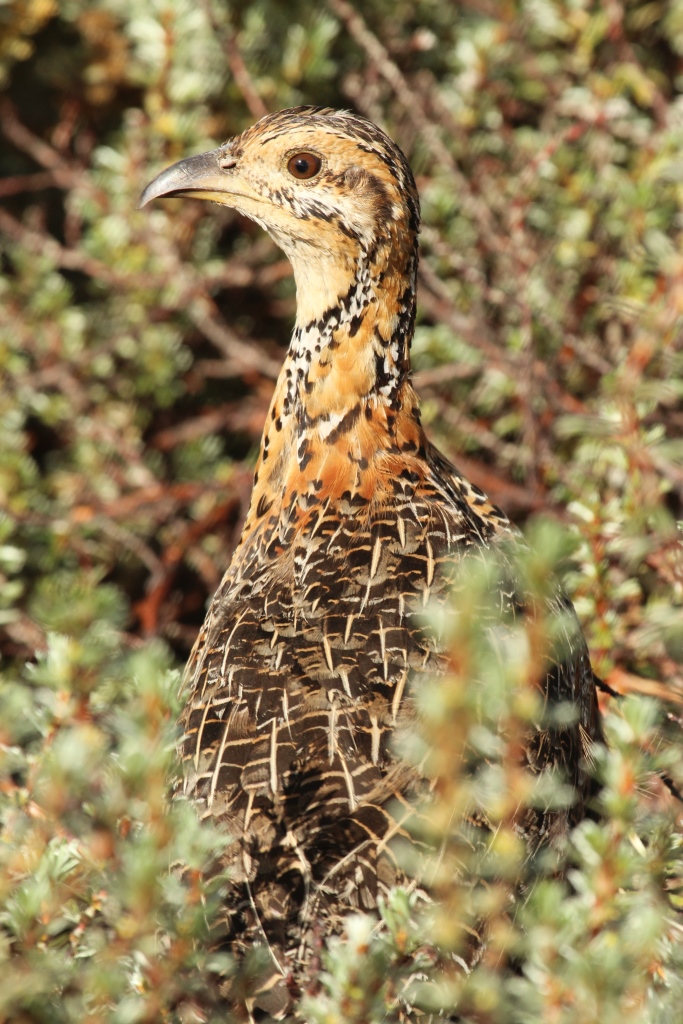Dear All,
While researching Moorland Francolins (
Scleoptila psilolaemus) earlier this week, it came to my attention that few images of Kenyan birds (
S.p.elgonensis) exist and so I put out a request for images. Thankfully, Stratton Hatfield has come to the rescue and sent me some stunning images of birds he photographed at 3200m (10,500 feet) on Mount Kenya in May this year.
I have attached two images of Stratton's Mount Kenya birds, and another one from Mount Kenya which I found online today taken by Justin Bell (
www.astepahead.es). I've also added a couple of super images taken by Lars Petersson (
www.larsfoto.se) in Ethiopia of the nominate subspecies (
S.p.psilolaemus) for comparison. To me, they look like completely different birds and I hope you'll agree that the considerable differences are clear to see, not only in plumage but also in structure - the bills being an obvious case in point.
In literature, Zimmerman, Turner and Pearson (1999) state that subspecies
elgonensis occurs at high elevations on Mount Elgon and the nominate occurs on Mount Kenya and the Aberdares (is this erroneous Don?). Although I cannot find images of
elgonensis birds from Mount
Elgon with which to compare, I'm would hazard a guess that they are
basically the same as those on Mount Kenya and quite unlike those of
Ethiopia. Stevenson and Fanshawe (2002) add that the species is also found on Mau Narok but do not mention the subspecies involved. It is noteworthy that the illustrations in both books clearly show
elgonensis rather than
psilolaemus . An online search of Moorland Francolin on Avibase (
avibase.bsc-eoc.org) states the geographical range of S.p.elgonensis as "Montane moorlands of e Uganda to central Kenya".
According to the IOC list (version 3.4), "BLI (Birdlife International) splits Elgon Francolin from Moorland Francolin (BLI Globally Threatened Bird Forums 8 March 2013)" but I cannot find any other reference to this split, even on Avibase.
Given the significant differences between the nominate S.p.psilolaemus and S.p.elgonensis and the recent recognition by BLI, it would appear that Kenya has a new 'near-endemic' species to celebrate. Although Elgon Francolin seems to have precedence, I'm wondering if Montane Francolin might be more apt, given the distribution of the form?
Don - Do you happen to know if any DNA work has been carried out on these birds, and have you any thoughts or information to add to the above?
Has anybody else had experience of the two forms, or anything additional to add?
Cheers for now,
Adam




